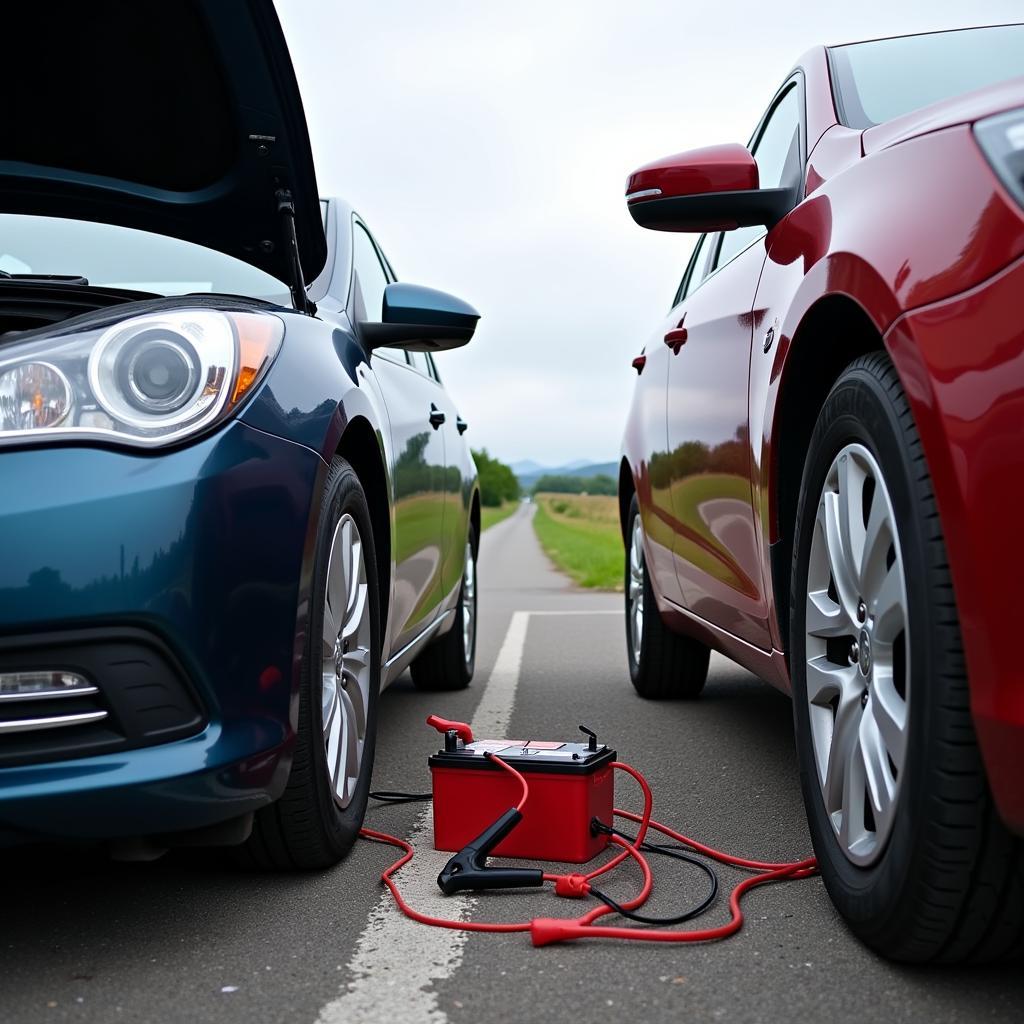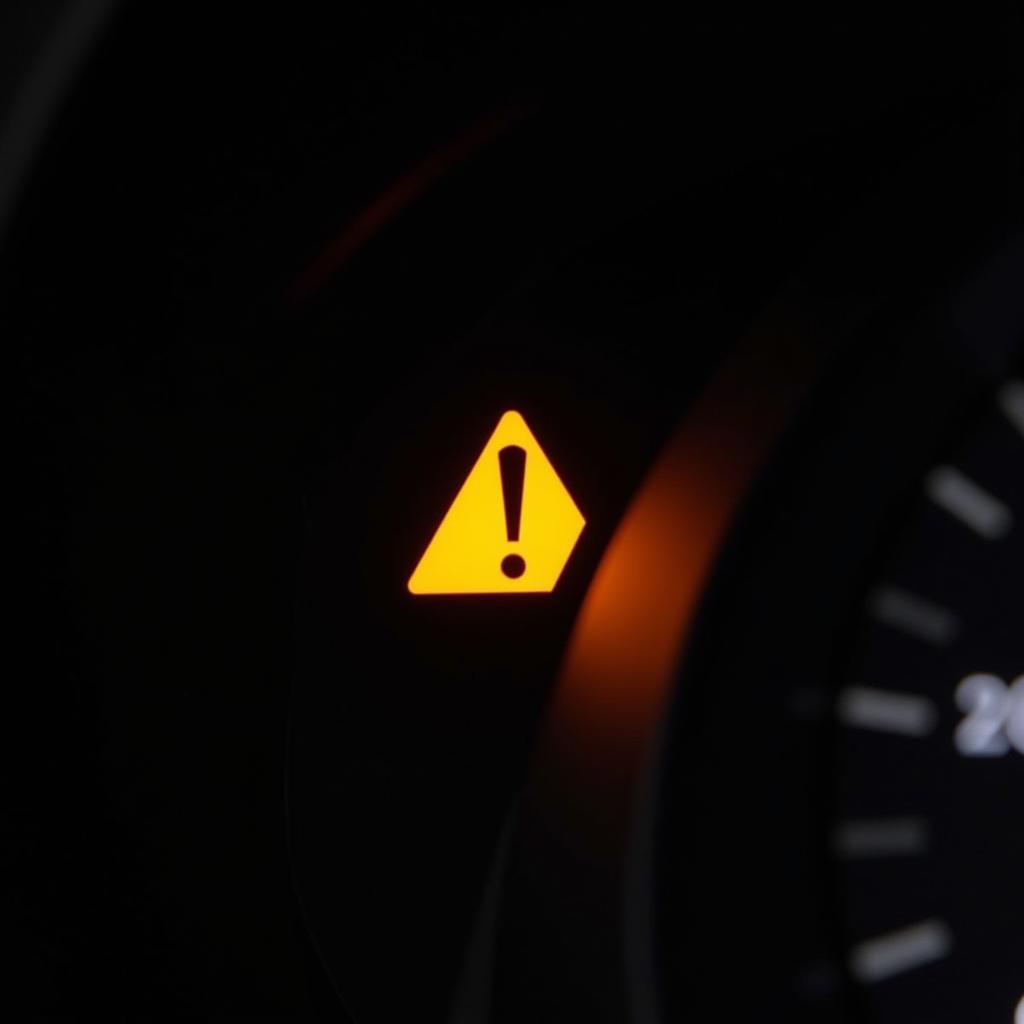Imagine this: you’re cruising down the highway, enjoying the open road, and suddenly, everything goes dark. Your radio cuts out, your headlights dim, and your engine sputters to a stop. Your battery has died while driving. This can be a terrifying experience, but knowing what to do and why it happened can save you from a roadside emergency.  Car Battery Dying While Driving
Car Battery Dying While Driving
What Happens When Your Car Battery Dies While Driving?
Unlike a dead battery that prevents your car from starting, a battery dying while driving signals a different issue. When your car is running, the alternator is responsible for powering the electrical systems and recharging the battery. So, if the battery dies mid-drive, the alternator is likely the culprit, or there’s a significant electrical drain somewhere in the system. If your car battery dies immediately, it’s crucial to address the underlying cause.
Identifying the Culprit: Alternator or Electrical Drain?
A failing alternator is the most common reason a car battery dies while driving. The alternator is like the heart of your car’s electrical system, constantly supplying power. A defective alternator can’t keep up with the demand, eventually draining the battery and leaving you stranded. Another possibility is an electrical short or a parasitic drain. This could be caused by a faulty component, such as a malfunctioning light, radio, or even a wiring issue. Knowing the defective car battery symptoms can help diagnose the issue.
What to Do If Your Battery Dies While Driving
First and foremost, stay calm. If the car is still rolling, try to safely pull over to the side of the road, away from traffic. Turn on your hazard lights to alert other drivers. If you’re on a highway, try to reach an emergency lane or exit.
Troubleshooting Steps
- Check the alternator warning light: If the battery light or charging system warning light is illuminated on your dashboard, it’s a strong indicator of alternator problems.
- Attempt a jump start: If you have jumper cables and another vehicle, try jump-starting your car. If it starts, drive directly to a mechanic, as the battery will likely die again once the jumper cables are removed.
- Call for roadside assistance: If jump-starting doesn’t work or you’re uncomfortable doing so, call for roadside assistance. They can diagnose the issue and tow your vehicle to a repair shop if necessary.
“A dead battery while driving is often misdiagnosed as just a bad battery. It’s essential to check the charging system thoroughly to prevent recurring issues,” says John Miller, Senior Automotive Electrical Diagnostic Technician.
Preventing Future Battery Failures
Regular maintenance can prevent your battery from dying unexpectedly. Have your battery and alternator tested regularly, especially if your battery is more than three years old. Ensuring all electrical systems are functioning correctly can keep car battery from dying.
Maintenance Tips
- Regular battery testing: Have your battery tested at least twice a year.
- Alternator inspection: Ask your mechanic to check your alternator during routine maintenance.
- Minimize electrical drain: Avoid leaving lights, radio, or accessories on when the engine is off.
- Address electrical issues promptly: Don’t ignore warning lights or unusual electrical behavior.
“Preventive maintenance is key to a healthy car battery. Regular checks can save you from the headache and potential danger of a roadside breakdown,” advises Sarah Johnson, Lead Automotive Systems Engineer.
Conclusion
Experiencing a dead battery while driving can be stressful, but understanding the potential causes and knowing how to react can minimize the disruption. Regular maintenance, prompt attention to warning signs, and a basic understanding of your car’s electrical system can go a long way in preventing this situation and keeping you safely on the road. Don’t underestimate the importance of a functioning battery and alternator – they are vital for a smooth and safe driving experience. Remember, if your battery dies while driving, it’s not just about the battery; it’s a sign of a deeper electrical issue that needs to be addressed. Learning how to kill a car battery in a controlled environment for testing purposes can also be helpful for understanding its functionality. Knowing what to do if your car overheated now battery dead is also important.
FAQ
-
Can a bad alternator drain a new battery? Yes, a faulty alternator can quickly drain even a new battery.
-
How long can you drive on a dying battery? If the alternator is failing, you might only be able to drive for a short period, perhaps a few minutes to a couple of hours, depending on the battery’s condition.
-
What are the signs of a failing alternator? Dimming headlights, flickering interior lights, and a whining noise from the engine compartment can indicate a failing alternator.
-
Can I drive my car if the alternator is bad? You can drive for a limited time, but it’s not recommended. Driving with a bad alternator will eventually drain your battery completely.
-
How much does it cost to replace an alternator? The cost varies depending on the make and model of your car, but it typically ranges from $300 to $800.
-
Can a loose battery cable cause the battery to die while driving? Yes, a loose battery cable can disrupt the connection and lead to a dead battery while driving.
-
What should I do if my battery keeps dying? If your battery keeps dying, have your car’s electrical system checked by a qualified mechanic to diagnose and fix the underlying issue.


